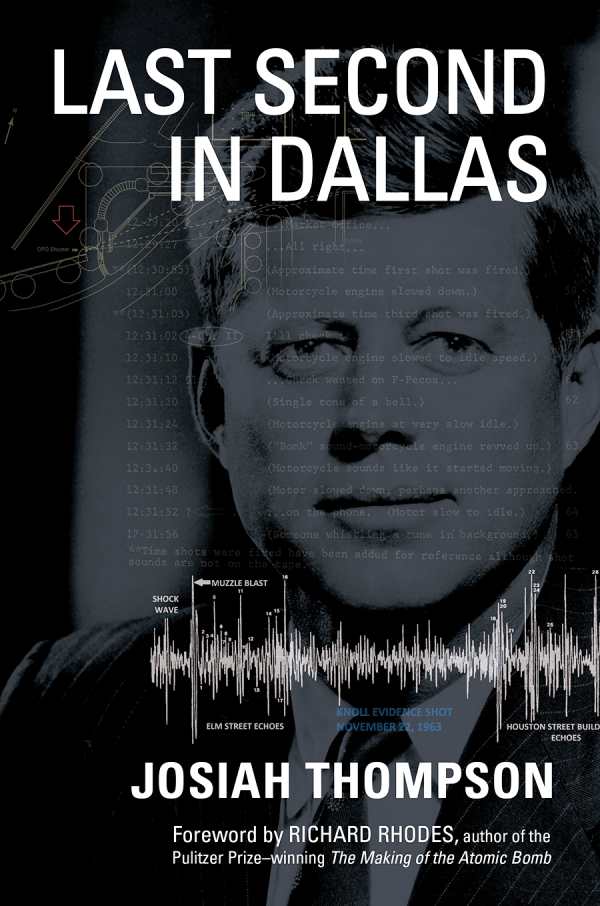Last Second in Dallas
Josiah Thompson’s reconsideration of the John F. Kennedy assassination, Last Second in Dallas, includes compelling assessments of the existing evidence, but also incorporates twenty-first-century technological advancements.
Decades of speculation followed Kennedy’s November 22, 1963 assassination and the later murder of suspect Lee Harvey Oswald. Though most Americans seemed to believe that the president was killed by a single shooter, Last Second in Dallas casts doubt, suggesting that it is unlikely that Oswald was able to assassinate Kennedy alone, with just a “$12.00 Italian army rifle,” even though Oswald’s unstable behavior and Marxist proclivities made him, by his own assessment, the perfect “patsy” for the murder.
Featuring meticulous analysis of bystander Abraham Zapruder’s famed 8 mm film, Last Second in Dallas integrates witness interviews with acoustic, ballistic, and other forensic findings. Autopsy mistakes are noted, as are the personal and political prejudices that may have influenced earlier theorists. The physics beyond Kennedy’s injuries are also integral, with the violent backward thrust of the president’s head shown to indicate that the fatal bullet came from a direction beyond Oswald’s aim.
Last Second in Dallas includes much engrossing technical information, and Thompson’s reflections add a personal historical perspective. Thompson, a graduate student at the time of the assassination, changed his career course from that of a cloistered academic to become an intrepid private investigator, paralleling the social upheavals of the era. Never wanting to be regarded as JFK conspiracy “crackpots,” Thompson and many of his contemporaries nonetheless began to question the 1964 Warren Commission’s single shooter verdict and to look for their own answers.
With intense, graphic scrutiny of the cataclysmic Kennedy assassination, Last Second in Dallas broadens the scientific review of the day and preserves the humanity of the times.
Reviewed by
Meg Nola
Disclosure: This article is not an endorsement, but a review. The publisher of this book provided free copies of the book to have their book reviewed by a professional reviewer. No fee was paid by the publisher for this review. Foreword Reviews only recommends books that we love. Foreword Magazine, Inc. is disclosing this in accordance with the Federal Trade Commission’s 16 CFR, Part 255.

